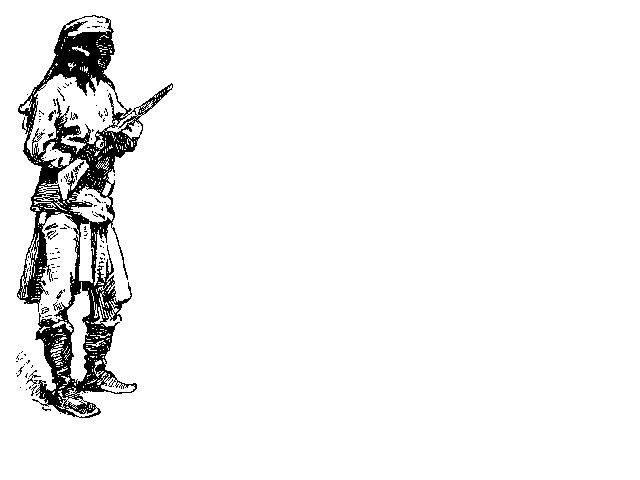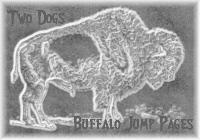
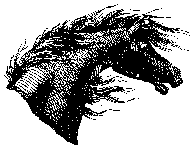
![]()
![]()
Horses
are a very important part of life up here.
Not only
are they used for pleasure riding, but are still used
as working
stock for cutting or rounding up cattle and
other
stock animals, packing for outfitters, hunters,
and ranchers,
pulling carts and wagons, plowing,
skidding
logs, or just getting us around as they did since
their
introduction to this country. In the area we live in horses are a way of
life, and as I have found they are
one of
the greatest companion animals around!
![]()
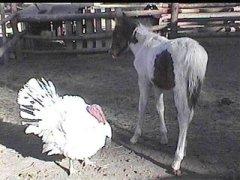
"Durango"
Durango
is one of our many rescue animals.
Sylvia
found him at a local stockyard awaiting his destiny
in the
kill pen. He was approximately ten weeks old
and would
have gone to the slaughter house if she had
not intervened.
Durango is joined by his
adopted
buddy Hatfield, a white Tom turkey that
Sylvia
and I raised from a hatchling.
![]()
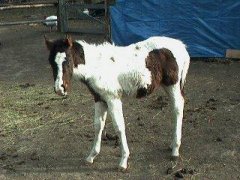
Durango
at 15 weeks old and starting
to fill
out just fine. We feed him a diet of Grow-Colt
mixed
with corn oil and alfalfa pellets twice daily,
along
with about twenty pounds of hay and lots of love.
![]()
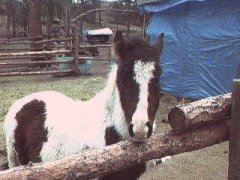
FEED ME NOW!
![]()
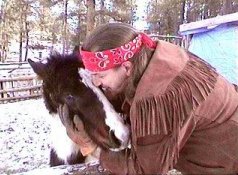
More hugs from that two legger!

![]()
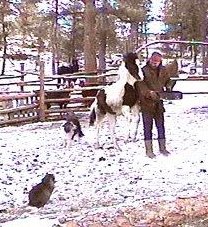
Jumping
for joy at the morning feeding.
Now at
four months old, this little guy has become
quite
a character, and is definitely going to make it.
![]()
Sylvia
and I are members of the Greater Yellowstone
Backcountry
Horseman's Association, which has
chapters
nationwide. The main function of the
organization
is to work hand in hand with other
organizations
like U.S. Forestry, and the
Bureau
of Land Management in maintaining and
building
trails for pleasure riders to enjoy.
Their
newsletters offer information that make
horseback
riding a safe and pleasurable experience.
I was
amused by the latest bit of advice they gave
to riders
that venture into Grizzly country.
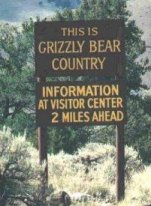
When riding
in Grizzly Bear country, it is a common
practice
to wear little bells on you and your horse so
that
you will not surprise any Grizzlies in your vicinity.
It is
also a very good idea to carry Pepper spray
as a
deterrent to any bears you come upon.
You also
have to know what kind of bear country
you are
in, and this is very easy. You do this by
checking
any bear droppings you find.
Black
Bear droppings will look like tar and
have
remnants of berries, grass, and squirrel fur,
while
Grizzly Bear droppings
will
be full of little bells and smell like pepper!
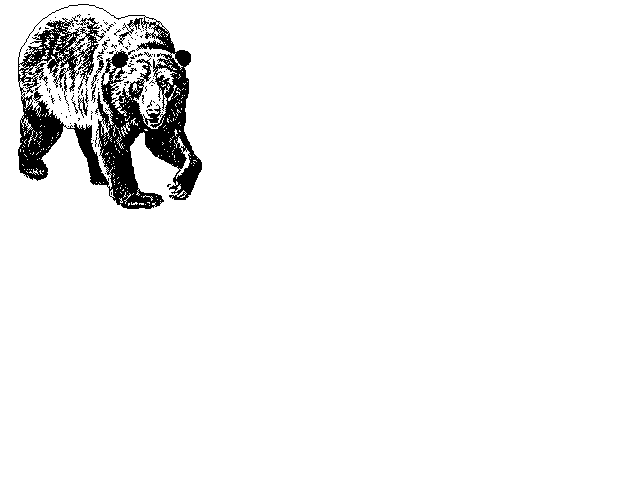
![]()
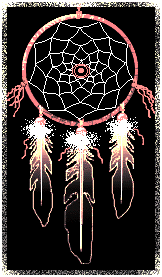
![]()
